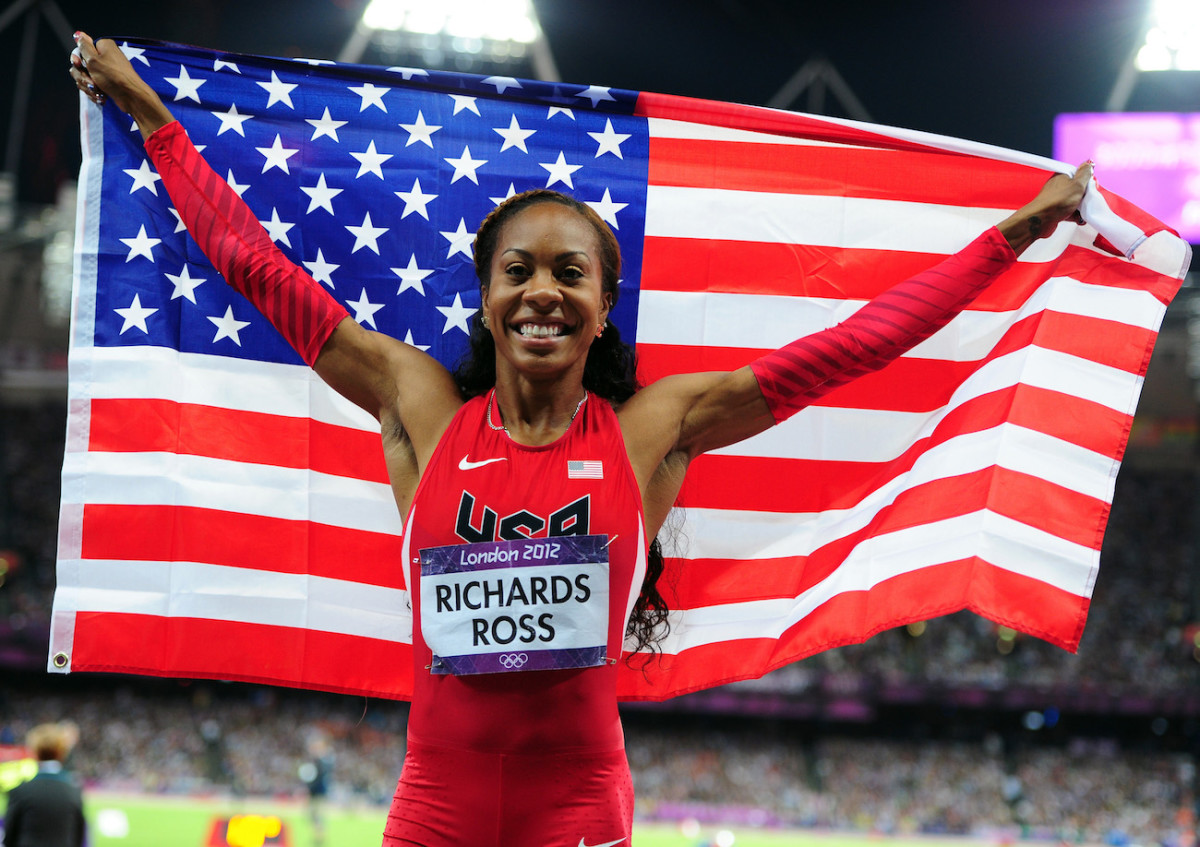Meet Team USA: Sanya Richards-Ross


Age: 31
Sport: Track and Field
American track star Sanya Richards-Ross knows a thing or two about crossing finish lines and winning gold. Need proof? Just check out the five Olympic medals (including four gold) that she already has. But the Austin, Texas, native isn’t sitting around polishing her hardware. Instead, she’s eyeing more at the 2016 Summer Olympics. In Rio, she’ll defend her title in the 400 meter and try to help the US team make history.
Sports Illustrated Kids spoke to Richards-Ross about how getting older has impacted her training, her workout regimen, and how her past experience is helping her become the most decorated track and field Olympian of all time.
You’re already an Olympic and world champion — how do you stay motivated?
I love to run. I love competing. So it doesn’t feel like work, even though sometimes it’s really hard. Anything worth having requires hard work, but for me it doesn’t feel like work. I know running isn’t going to last forever, so I’m just taking advantage of the opportunity.
You’ve evolved as an athlete over the last few Games. What’s been the toughest part of your training this year?
Holding myself back. I’ve been training smarter, not harder. When you’re young, you recover quickly and the body can take a whole lot more. At age 30 and 31, hard work takes a little bit more out of you. I’ve had to be a little more reserved and say to myself, “Ok, this is enough.” My training sessions have been getting better, though, and that’s been reassuring. Sometimes my coach will tell me to take tomorrow off, and I’ll be like, “Why? I’m good!” He reminds me that I’ve just had three hard days, so I should take one day off so my body can recuperate.
What is your strength training like leading up to the Games?
Strength training has always been a huge part of my regimen for my training. I’ve been with the same strength coach for over 13 years. He was my coach at the University of Texas and left Texas and has been training me since then. Early season I do a lot of functional training – preparing my muscles for heavy lifting. By November and then into December and January, I’m heavy lifting, doing a lot of Olympic lifts – power snatches, power cleans, lot of squatting. I do a lot of dynamic stuff in the gym – a lot of jumping and bounding for explosion. I lift a little upper body, but don’t do too much upper body work. Mostly focus on my legs and core for the kind of strength and endurance that I need to run the 400 meter. I’m in the gym four days a week early in season, and then that goes to three days a week as I get closer to competition. When I go to the Games I’m not lifting heavy. It’s more about going back to the functional stuff and keeping it light and fast and getting ready to run fast.
How much will you train in Brazil?
Every athlete definitely has a different regimen going into the Olympics. Speaking for myself, I’m actually there for two and a half weeks before I start competing and I’m not just there waiting to run. I’ll have intense training workouts to accomplish.
You have to focus on your events when you go to the Olympics, but do you usually have some free time to enjoy the country?
Not really. I’ve been to cities all over the world to compete, but I haven’t actually seen that many places. That’s a part of the process and I appreciate it, too. You don’t want to be walking around and doing too many things at the Olympics. It’s all about resting, eating, and being prepared. We run, and then it’s time to go home. So unfortunately I don’t get to do much.
What are your personal goals for Rio?
Well, 2012 was just the most amazing Olympics for me. I won two gold medals, and so I do want to go back and give it my best and hopefully defend my title in the 400 meter. But I’m also equally as eager to be on the team for the 4-by-4. If we win a gold medal, we’ll be the only country ever to win four consecutive gold medals in the 4-by-4 relay, so it’ll be a great treat for me to have that experience again. To be able to step onto the track and represent the US with my teammates gives me so much pride and joy, so for me it’s about going there and representing team USA.
What have you learned from your past Olympic experiences that is shaping your outlook this time around?
Every year and every Games has been different. In 2008, I was favored to win gold and I won the bronze medal. It was really tough for me. So in 2012, I had different motivation. This year, I have a different perspective. I’m really grateful and appreciative for all that I’ve accomplished in my career and I feel like I’m training from a place love, hope, and anticipation. It’s fueling my training and I think it’s going to help me have my best performance ever. I’m leaning on the experience I’ve had in the past. The main thing for me is staying patient. As an athlete sometimes you want everything to happen right now, and when I focus on what I can do today and give my best every single day, that has helps me to perform at my best. This year, it feels right. I hope this will be my swan song and I’ll be able to leave the sport on a really high note. So I’m working really hard towards that.
Photo: Mike Hewitt/Getty Images
